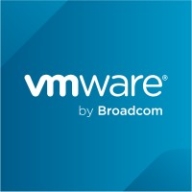


Find out what your peers are saying about Broadcom, Proxmox, Microsoft and others in Server Virtualization Software.
You need only one physical server that can host several virtualized servers within the same physical server instead of having multiple physical servers.
I did not perform any long-term stress tests, just for a couple of hours or days on every application.
We can say 10% is the approximate amount of savings because most of the things are automated and streamlined, so the manual work is eliminated in most cases.
Technical support from Microsoft is excellent, rated ten out of ten.
The technical support for Hyper-V is excellent
The technical support is very good
Their forum and documentation is more than enough for technical support.
Priority one issues are usually addressed by engineers within one to two hours.
Recently, support has been less friendly and slower, especially after the company was acquired by Broadcom.
If we have issues, the support tends to be unreliable
Hyper V can support over two hundred virtual processors and around 12 TB of memory.
The scalability of Hyper-V is great; I would rate it nine out of ten.
Scaling is easy, whether it is hyperconverged or a three-tier architecture.
VMware vSphere is highly scalable in terms of the number of users and the number of servers it can handle.
It is a highly scalable solution.
Automation is unavailable, and reporting is difficult.
Frequent Windows updates can impact stability compared to VMware ESXi.
The snapshot functionality in Oracle VM VirtualBox is effective for management purposes.
It is a very stable hypervisor solution.
While they are generally stable, if outages occur, they tend to be due to brands like HP or Dell, not VMware vSphere itself.
Mostly we don't have issues, but sometimes we have faced some stability issues because of some bugs and some CPU compatibility issues with Intel CPUs.
Hyper-V should ensure the features of VMware are covered within its platform.
Hyper-V could be improved by implementing the same set of features that other tools provide.
In future updates, I would like to see improvements in reporting and a resolution to some security weaknesses.
Having some kind of API to maintain Oracle VM VirtualBox would be beneficial.
The cost changed from perpetual to subscription, and there is a need for alternative solutions.
Another area is the stability during upgrades from older versions to newer versions, where we face issues.
Sometimes, it is difficult to find documentation for specific tools and solutions.
Hyper-V is completely free and requires no licensing fee.
Hyper-V's licensing costs are lower compared to VMware, making it cost-effective for smaller workloads.
Until 2019, Hyper-V was a cost-effective solution because it was available as a free product.
In the enterprise scenario, all software solutions, including Oracle VM VirtualBox, are expensive.
Many customers are trying to avoid it due to its high cost.
Costs significantly increased from perpetual to subscription, with prices rising by two to three times over three to five years.
The solution is too expensive.
It is completely free, which is a significant advantage.
I have seen return on investment with Hyper-V because it is both time-saving and cost-effective.
It offers the stability needed for non-enterprise data centers and has improved over time.
Its snapshot functionality helps with backup management.
The guest OS compatibility was tremendous because I used Oracle VM VirtualBox on Linux and ran Windows applications on top of that, working seamlessly.
The vMotion feature is beneficial for online migration of virtual machines from one host to another without downtime.
The tool is highly available, which is crucial for implementing critical applications requiring 24/7 availability.
I always use VMware vSphere vMotion; we work with this feature all the time. vMotion is very useful; that's why we use the virtualization.
| Product | Market Share (%) |
|---|---|
| VMware vSphere | 16.8% |
| Hyper-V | 15.2% |
| Oracle VM VirtualBox | 6.0% |
| Other | 62.0% |



| Company Size | Count |
|---|---|
| Small Business | 68 |
| Midsize Enterprise | 37 |
| Large Enterprise | 46 |
| Company Size | Count |
|---|---|
| Small Business | 32 |
| Midsize Enterprise | 20 |
| Large Enterprise | 17 |
| Company Size | Count |
|---|---|
| Small Business | 174 |
| Midsize Enterprise | 137 |
| Large Enterprise | 256 |
Hyper-V is a hardware virtualization tool that allows users to create virtual computer environments with multiple operating systems on a single physical server. Each virtual machine has computer parts, such as memory, processor, storage, and networking, and acts like a standard computer - running its own operating system and software programs. Each component of the virtual machine can be configured to meet your specific requirements.
Hyper-V creates a cost-effective, stable, and productive server virtualization environment by running multiple operating systems, such as Windows, Linux, and more, in parallel on one machine or server. Each virtual machine runs in its own isolated space, which means you can run many virtual machines simultaneously but independently of each other. This helps prevent problems such as a crash affecting the other workloads and enables different users to separately access various systems.
Benefits of Hyper-V
Hyper-V key features:.
Reviews from Real Users
Hyper-V stands out among its competitors for a number of reasons. Several major ones are its flexibility, its replication capabilities, and the fact that its virtual machines utilize a small amount of resources..
Liam L., the owner of a tech services company, writes, “It is actually very low on resources. It doesn't use many resources. It is also very easy to tailor. You can change things like the amount of memory and storage on the fly. It is very stable and reliable. I like its replication feature, which is very good. It is also very easy to move the virtual machines across push servers without any difficulty. Its performance is also very good. Now with this pandemic, a lot of workers are working from home. A lot of workers have been using laptops as their desktop computers, and they would remote into a virtual PC. There is no difficulty, and they can't tell the difference between this and the real one. It is much easier to manage.”
Kevin E. an IT director at Homeland Technology Group, LLC, notes, “We've probably seen a 50 percent speed increase on our SQL server. Hyper-V has also significantly reduced our downtimes with faster boot-up and reboot. If we have to reboot a server, there is maybe two or three minutes of downtime. When we were on a bare-metal server, it could be five to ten minutes due to the total boot time.”
Oracle VM VirtualBox is a robust AMD64/Intel64 and x86 next-generation virtualization solution that functions well for home use and is also powerful enough to handle the needs of a busy enterprise organization. This professional solution is open source and provides super-fast high performance in addition to many outstanding value-added features. VirtualBox functions effectively on Windows, macOS, Solaris, Linux, and more. Users can benefit from VirtualBox's dedication to continually developing the product and providing continual progressive updates and releases. The solution is supported by a trusted dedicated professional community and is backed by Oracle, which guarantees that the product is able to consistently meet and exceed quality controls and protocols at all times.
Oracle VM VirtualBox Features
Oracle VM Virtual Box provides many value-added features. Some of these features include:
Reviews from Real Users
“Oracle VM VirtualBox is easy to use and does not require much training. It uses fewer resources. Teams using new operating system releases can quickly test and implement. This would make the development of new software releases faster and easier. It also helps users to write the program, test, and support it on multiple platforms. It has a good community as it is open-source.” - Satishbabu G., Oracle ACE
“It is easy to use and does not require complex knowledge. It uses less resources, which is a requirement as it is used to onboard hardware with very little resources available.” - A PeerSpot user who is an IT Architect - AI at CGI
VMware vSphere is a versatile virtualization platform known for its ease of use, flexibility, and high availability. It supports seamless migration, optimal resource allocation, and centralized management, making it highly suitable for diverse infrastructure needs.
VMware vSphere is widely adopted for its virtualization capabilities that enhance hardware efficiency and ensure minimal downtime through features like High Availability and Distributed Resource Scheduler. Despite criticisms about high licensing costs and limited fault tolerance, it remains a preferred choice due to its stability, scalability, and robust integration options. Users appreciate its efficiency in managing virtual machines and hosting enterprise applications, although challenges with web client performance and hardware compatibility are noted. Organizations often look for better integration with cloud services and enhanced automation and scalability.
What are the core features of VMware vSphere?
What benefits and ROI can businesses look for?
VMware vSphere is implemented across sectors like healthcare, finance, and education for server virtualization, data center management, and private cloud creation. Its use in facilitating business-critical operations ensures high availability and efficient resource use, supporting both development and production environments.